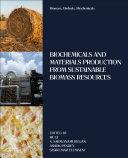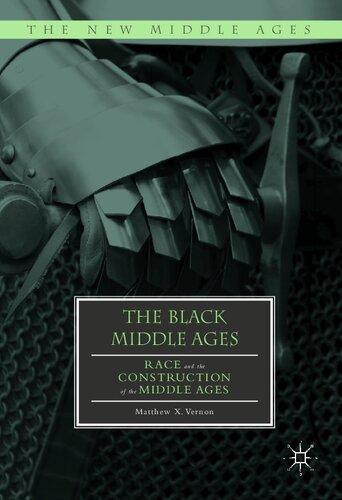Fluid Transport
First published 2016 in Great Britain and the United States by ISTE Press Ltd and Elsevier Ltd
Apart from any fair dealing for the purposes of research or private study, or criticism or review, as permitted under the Copyright, Designs and Patents Act 1988, this publication may only be reproduced, stored or transmitted, in any form or by any means, with the prior permission in writing of the publishers, or in the case of reprographic reproduction in accordance with the terms and licenses issued by the CLA. Enquiries concerning reproduction outside these terms should be sent to the publishers at the undermentioned address:
ISTE Press Ltd
27-37 St George’s Road
Elsevier Ltd
The Boulevard, Langford Lane London SW19 4EU Kidlington, Oxford, OX5 1GB UK UK
www.iste.co.uk
www.elsevier.com
Notices
Knowledge and best practice in this field are constantly changing. As new research and experience broaden our understanding, changes in research methods, professional practices, or medical treatment may become necessary.
Practitioners and researchers must always rely on their own experience and knowledge in evaluating and using any information, methods, compounds, or experiments described herein. In using such information or methods they should be mindful of their own safety and the safety of others, including parties for whom they have a professional responsibility.
To the fullest extent of the law, neither the Publisher nor the authors, contributors, or editors, assume any liability for any injury and/or damage to persons or property as a matter of products liability, negligence or otherwise, or from any use or operation of any methods, products, instructions, or ideas contained in the material herein.
For information on all our publications visit our website at http://store.elsevier.com/
© ISTE Press Ltd 2016
The rights of Jean-Paul Duroudier to be identified as the author of this work have been asserted by him in accordance with the Copyright, Designs and Patents Act 1988.
British Library Cataloguing-in-Publication Data
A CIP record for this book is available from the British Library Library of Congress Cataloging in Publication Data
A catalog record for this book is available from the Library of Congress ISBN 978-1-78548-184-0
Printed and bound in the UK and US
2.1.
2.1.2.
2.1.3.
2.1.4.
2.1.5.
2.1.6.
2.2.2.
2.2.3.
2.2.4.
2.3.
2.3.1.
2.4.2.
2.5.
2.6.
2.6.1.
2.6.2.
2.6.3.
2.6.4.
2.6.5.
2.7.
2.7.1.
2.8.
2.8.1.
2.8.2.
2.8.3.
2.8.5.
2.8.6.
3.1.
3.1.1.
3.2.
3.2.1.
3.2.2.
3.2.3.
3.2.4.
3.2.5.
3.3.
3.3.1.
3.3.2.
3.3.3.
3.3.4.
3.3.5.
3.3.6.
3.3.7.
3.3.8.
3.3.9.
3.3.10.
3.3.11.
3.3.15.
3.3.16.
3.4.
3.4.1.
3.4.2.
Chapter 4. Electric Motors: Performance
4.1.
4.1.3.
4.1.4.
4.2.
4.3.2.
4.3.8.
4.3.9.
4.3.10.
4.3.11.
4.3.12.
4.3.13.
4.4.
4.4.1.
4.4.2.
4.4.3.
4.4.4.
6.5.
6.6. Liquid
6.6.1.
6.6.2.
6.6.3.
Chapter 7. Free Gas Expansion
7.1.
7.1.1.
7.1.2.
7.1.5.
7.1.6.
7.1.7.
7.1.8.
7.1.9.
7.2. Theoretical study of control
safety
7.2.1. Modeling
7.2.2.
7.2.3.
7.2.4.
7.2.5.
Chapter 8. Safety Valves and Rupture Disks
8.1.
8.1.1.
8.1.3.
8.1.4.
8.1.5.
8.1.6.
8.1.7.
8.2. Choice between two types of safety valves
8.2.1. Usual valves
8.2.2. Balanced plugs
8.2.3. Choosing a safety valve type
8.2.4. Inlet cross-section
8.3. Relationship between flowrate
8.3.1. Gases
8.3.2. Liquids
8.3.3.
8.3.4.
8.4. Upstream and downstream
8.4.1. Connection between valve and protected device
8.4.2. Exhaust
8.4.3. Reaction
8.5. Various applications...............................
8.5.1. Vacuum-breaking
8.5.2.
8.5.3.
8.6.
8.6.1.
8.6.2.
8.6.3.
8.6.4.
8.6.5.
8.6.6.
8.6.7.
8.6.8.
8.6.9.
Chapter 9. Breathing, Inerting, Gas
9.1. Breather valve specifications: reservoir filling ratio limitations
9.1.1. Types of temperature fluctuations
9.1.2.
9.1.3. Range
9.1.4.
9.2. Assessment of
9.2.1.
9.2.2.
9.2.3.
9.2.4.
9.3.
Chapter 10. Flow in Pipes: Rarified
10.1.
correlations but, sometimes, simple reasoning is enough to account for a phenomenon.
Since our very beginnings on this planet, humans have had to deal with the four primordial “elements” as they were known in the ancient world: earth, water, air and fire (and a fifth: aether). Today, we speak of gases, liquids, minerals and vegetables, and finally energy.
The unit operation expressing the behavior of matter are described in thirteen volumes.
It would be pointless, as popular wisdom has it, to try to “reinvent the wheel” – i.e. go through prior results. Indeed, we well know that all human reflection is based on memory, and it has been said for centuries that every generation is standing on the shoulders of the previous one.
Therefore, exploiting numerous references taken from all over the world, this series of books describes the operation, the advantages, the drawbacks and, especially, the choices needing to be made for the various pieces of equipment used in tens of elementary operations in industry. It presents simple calculations but also sophisticated logics which will help businesses avoid lengthy and costly testing and trial-and-error.
Herein, readers will find the methods needed for the understanding the machinery, even if, sometimes, we must not shy away from complicated calculations. Fortunately, engineers are trained in computer science, and highly-accurate machines are available on the market, which enables the operator or designer to, themselves, build the programs they need. Indeed, we have to be careful in using commercial programs with obscure internal logic which are not necessarily well suited to the problem at hand.
The copies of all the publications used in this book were provided by the Institut National d’Information Scientifique et Technique at Vandœuvre-lèsNancy.
The books published in France can be consulted at the Bibliothèque Nationale de France; those from elsewhere are available at the British Library in London.
In the in-chapter bibliographies, the name of the author is specified so as to give each researcher his/her due. By consulting these works, readers may
1.1. General
Fluid Ejectors and Gas Ejectors
1.1.1. Principle of an ejector
Consider a convergent followed by a divergent. Between them is a neck with a constant cross-section, and the driving fluid goes through this convergent–divergent.
Using the Bernoulli equation, we can describe the flow of an incompressible fluid:
In other words, the more the velocity increases, the more the pressure diminishes.
At the neck, the speed is at its maximum and the pressure is at its minimum. Consequently, this location can be used for the arrival of suction fluid piping.
We will see that, for a simple fluid, the conservation of momentum should be employed.
Gases require: – the conservation of energy; – the conservation of momentum.
Similarly, the acceleration of the suction fluid is denoted by:
With:
0.92 < ηa < 0.96
a ae a W U ρ A1 τ =
Let us note the conservation of momentum:
The coefficient λ denotes the loss of pressure in the mixing chamber.
On the other hand:
After the mixing chamber, the diffuser obtains pressure recovery:
ηD: yield of diffuser
0.75
δ: square of the cross-sections ratio of the divergent.
By replacing Us with its value, we reach:
1.3. Gas ejectors and thermocompressors
1.3.1. Parameters of the problem
We use the one-dimensional theory which supposes that the properties of fluids and their behavior are constant through the area of their flow crosssection. A three-dimensional theory would account for these variations; however, the results of the one-dimensional theory are sufficient in accounting for experimental results.
We will take as known the results of compressible fluid mechanics in subsonic or supersonic flow.
Readers may refer to the work of Brun et al. [BRU 68].
The details are represented in Figure 1.2.
Wa: rate of suction gas (kg.s 1)
Ae: cross-section of mixing passage (m2)
G: flow quotient preceded by section Ae (kg.s 1 .m 2)
τcol: ratio of the nozzle neck cross-section to section Ae
Figure 1.2. Principle of a gas–gas ejector







